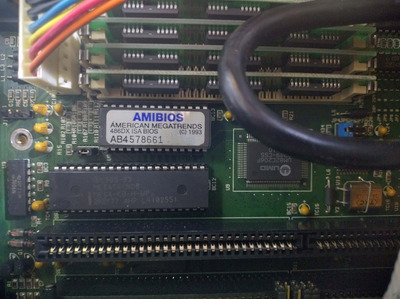First post, by dogwomble
Hey all,
I wanted to try and get a little bit of guidance on this, as it seems information on this is a little bit scattered and contradictory.
I am about to embark on restoring an old 486. One of the issues I was planning on tackling was the BIOS battery, as it's dead. Thankfully this wasn't using a CR2032, it was using a separate battery via PIN header, which was an old 3.6v lithium. This at least means it hasn't spewed its guts all over the motherboard.
I did have a thought, and bought parts for, a 3xAA battery holder that I could graft onto the existing connector as a cheap and dirty way to use some existing AA batteries that I have. The only issue is that I would then be feeding it 1.5 volts, as each of my AA's does 1.5 volts. This may be too much voltage. Another alternative would be possibly using some rechargeable batteries which typically run at 1.2v, but these can be quite a bit more expensive.
Before I take the plunge with either of these options, I'm wondering if anyone has experience with running their BIOS chips at higher voltages. If it helps, it is an AMI BIOS chip - I am hoping to try and avoid peeling the label off to identify the specific chip they've used, because that would be a PITA.
